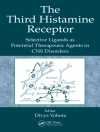Solid and transparent data analysis is the most important basis for reliable interpretation of experiments. The technique of parallel spike train recordings using multi-electrode arrangements has been available for many decades now, but only recently gained wide popularity among electro physiologists. Many traditional analysis methods are based on firing rates obtained by trial-averaging, and some of the assumptions for such procedures to work can be ignored without serious consequences. The situation is different for correlation analysis, the result of which may be considerably distorted if certain critical assumptions are violated. The focus of this book is on concepts and methods of correlation analysis (synchrony, patterns, rate covariance), combined with a solid introduction into approaches for single spike trains, which represent the basis of correlations analysis. The book also emphasizes pitfalls and potential wrong interpretations of data due to violations of critical assumptions.
Jadual kandungan
Basic spike train statistics: Point process models.- Stochastic Models of Spike Trains.- Estimating the Firing Rate.- Analysis and Interpretation of Interval and Count Variability in Neural Spike Trains.- Processing of Phase-Locked Spikes and Periodic Signals.- Pairwise comparison of spike trains.- Pair-Correlation in the Time and Frequency Domain.- Dependence of Spike-Count Correlations on Spike-Train Statistics and Observation Time Scale.- Spike Metrics.- Gravitational Clustering.- Multiple-neuron spike patterns.- Spatio-Temporal Patterns.- Unitary Event Analysis.- Information Geometry of Multiple Spike Trains.- Higher-Order Correlations and Cumulants.- Population-based approaches.- Information Theory and Systems Neuroscience.- Population Coding.- Stochastic Models for Multivariate Neural Point Processes: Collective Dynamics and Neural Decoding.- Practical issues.- Simulation of Stochastic Point Processes with Defined Properties.- Generation and Selection of Surrogate Methods for Correlation Analysis.- Bootstrap Tests of Hypotheses.- Generating Random Numbers.- Practically Trivial Parallel Data Processing in a Neuroscience Laboratory.- Erratum to: Population Coding.












